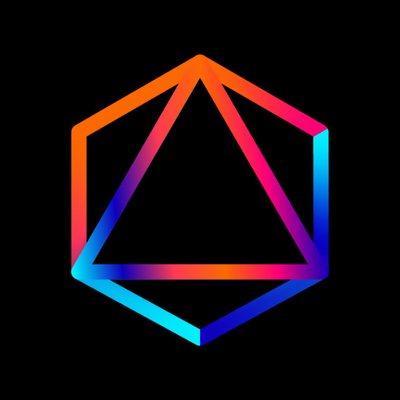Understand Polygon's upcoming blockchain aggregation layer AggLayer in one article
Editor: Felix, PANews
On January 25, Polygon Labs announced the upcoming release of version 1 of AggLayer in February, aimed at connecting blockchain with ZK proofs, enabling developers to connect blockchains to support unified liquidity and ensure unified security across modular and monolithic chains (including chains within the Polygon ecosystem).
AggLayer will be a key component of the next-generation network Polygon 2.0. Unlike typical interoperability solutions, AggLayer will aggregate ZK proofs from all connected chains. PANews takes you through the advantages and use cases of AggLayer.
Key Points:
Monolithic → Modular → Aggregated
AggLayer integrates the benefits of using ZK technology in an integrated (monolithic) and modular architecture.
AggLayer brings unified security and composability to aggregated chains without sacrificing sovereignty.
Developers can connect any L1 or L2 chain to AggLayer, building a single chain with unified liquidity and almost unlimited scalability.

Current blockchains are not unified, highly scalable networks. Due to fragmented liquidity and state, users face scalability limitations and poor user experiences. Moreover, the increasing number of new blockchains complicates the issue further. This environment resembles the pre-internet era, isolated and lacking interoperability. As for what the next development stage of blockchain is, looking back at the history of blockchain architecture, it is not difficult to see that aggregated blockchains may be the answer.
Monolithic and Modular
Monolithic chains are run by nodes responsible for consensus, data availability, and execution, also serving as the settlement layer. Such ecosystems are designed to be unified and interoperable but have fundamental limitations. As scalability increases, the hardware requirements for validators also rise, leading to higher centralization and reduced security. Even the most efficient blockchains will eventually lead to state bloat (storing too much data) and state contention. This means that the performance of the chain will degrade over time. Additionally, monolithic chains cannot provide meaningful customizability or sovereignty for ecosystem participants.
To address these challenges, developers have begun to patch modular architectures, and for good reason: modular frameworks solve many inherent problems of monolithic systems, allowing many chains to run independently and in parallel, each maintaining sovereignty, enabling higher scalability and diversity in chain design.
However, as an evolution of monolithic chains, modularity itself leads to the fragmentation of liquidity and users, creating a multi-chain ecosystem that either requires cumbersome and inefficient bridging or sacrifices chain sovereignty. Therefore, due to the fragmentation of liquidity and users, large-scale adoption is unlikely.
Aggregation

Aggregation provides the sovereignty and scale of modular architecture, along with unified liquidity and user experience for the system, combining these two approaches into a new state. The decentralized protocol AggLayer unifies a fragmented blockchain environment into a network composed of ZK-protected L1 and L2 chains, with its main tasks being:
Aggregating ZK proofs from all connected chains.
Ensuring the security of near-instant cross-chain atomic transactions.
Advantages
As a core component of Polygon 2.0, AggLayer will use ZK proofs to create a seamless aggregated environment, feeling like a single chain—even though each chain in the ecosystem maintains sovereignty.
This achieves near-instant atomic cross-chain transactions, unifying the liquidity of the entire ecosystem, enhancing capital efficiency, and significantly improving user experience.
For L1 and L2 connected to AggLayer: they maintain complete sovereignty while also leveraging a unified liquidity pool, guiding liquidity.
For dApp developers: aggregation covers users. Even if a dApp is on different chains, users from other chains can interact with it without cumbersome bridging. Seamless cross-chain transactions mean real growth and access for users of the aggregated network.
For end users: the user experience is like that of the internet, without cumbersome and frequent bridging. In the final state of AggLayer, end users will be able to execute cross-chain atomic transactions in less than 1 second.
Use Cases
Through AggLayer, a user holding DAI on X 1 can purchase NFTs on Polygon zkEVM without first bridging funds to Polygon zkEVM (Note: Recently, OKX and Polygon Labs launched a ZK Layer 2 network called "X 1"). From the end user's perspective, it feels like using a single chain, allowing users to interact with dApps without knowing they are accessing another chain.
Users can also send assets to participate in activities on another chain. Suppose Alice is on a game chain built using Polygon CDK and connected to AggLayer. Alice's wallet on the game chain also has ETH and DAI, and she wants to put them into a DEX on X 1. Alice can create a transaction to bridge DAI and ETH and call the function to LP these tokens from the game chain (and pay all fees).
The future AggLayer v2 will support asynchronous cross-chain transactions, expected to launch later this year.
Polygon primarily operates on ZK-Rollups' sidechains and Layer 2 network Polygon zkEVM, and also provides a software development kit called CDK, with many Layer 2 networks developed using this CDK toolkit, including Immutable, OKX, Astar, Canto, Palm Network, Aavegotchi, and IDEX. AggLayer is expected to facilitate the integration of all these chains under Polygon 2.0.











